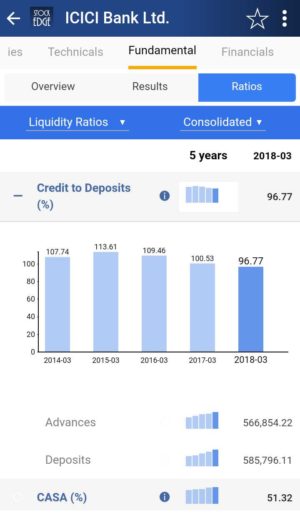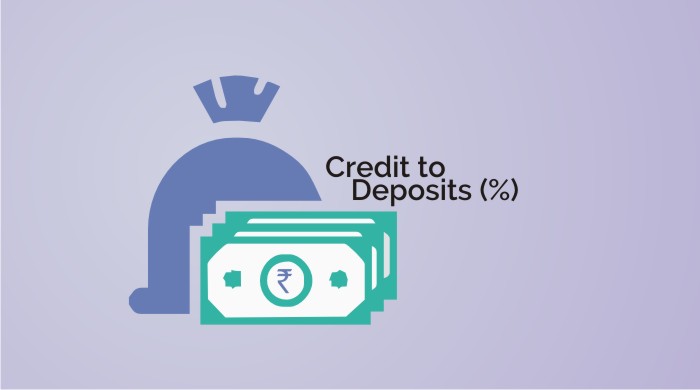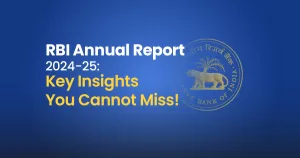Table of Contents

Who would not want a loan from the banks and that too if they come at low-interest rates? But hold on, do you realize, where do the banks get money from to give us loans? Actually, this is all our money which we deposit in the banks. Alarmed!!! Don’t be as there are many rules to be adhered to while taking loans. Let’s understand the Credit to Deposit (%).
Introduction to Credit to Deposit
Credit means loans given out to borrowers by the banks. Credits are assets of the Bank. Deposits are the amount received from customers as deposits in the banks. Deposits are a liability to the bank. So; the credit-deposit ratio broadly means the ratio of assets and liabilities of the banks. The credit-to-deposit (CTD) or loan-to-deposit ratio (LTD) is used for measuring a bank’s liquidity by dividing the bank’s total loans disbursed by the total deposits received. It indicates how much of a bank’s core funds are being used for lending which is the main banking activity.
CD ratio helps in assessing a bank’s liquidity and indicates its financial health. A higher ratio indicates that the loans disbursed are more than the deposits and vice-versa.
What is the formula for CD Ratio?
Credit to Deposit ratio (%) = Total Advances/Total Deposits
Watch the video below on Everything you want to know about the Credit to deposit ratio:
Importance of Credit to Deposit Ratio
If the ratio is too low, banks may not be earning as much as they should and it also indicates that banks are not mobilizing their resources fully. If the ratio is too high, it means that banks might not have enough liquidity to cover any unforeseen fund requirements, which may cause an asset-liability mismatch.
A very high ratio is considered alarming because, in addition to indicating pressure on resources, it may also hint at capital adequacy issues, forcing banks to raise more capital. Ideally, there is no range in which the ratio should be, but it should be neither too high nor too low hence it should be kept in a balanced range.
Importance of Credit to Deposit Ratio for Banks
This ratio is a measure of banks’ financial health. When the interest rate increases, deposits grow at a faster pace than loans because higher interest rates push investors to invest more money. Conversely, when rates are lower, deposits reduce. These changes affect the CTD ratio. But, the Reserve Bank has voiced concerns over the current ratio of banks as it could have financial stability implications at the systemic level.
See also: Operating Income Growth(%) Ratio
Explanation
Suppose a Bank ABC has total advances of Rs. 40,00,000 crores and total deposits of Rs. 50,00,000 crores.
Credit to Deposits ratio (%) = 4000000/5000000= 80%
The Credit to Deposit ratio is 80%. This indicates that for every new Rs. 100 deposit Rs. 80 is being lent out.

Stockedge App
With the
.Stockedge app, we don’t have to calculate the Credit to Deposit ratio (%) on our own. It gives us the Credit to Deposit ratio of the last five years of any company listed on the stock exchange. We can look and compare the Credit to Deposit ratio (%) of any company and filter out stocks accordingly.
Suppose we want to look at the Credit to Deposit ratio of ICICI Bank Ltd. for the last 5 years than in the Fundamental tab of ICICI Bank Ltd., click on the fundamentals tab, we will get the Ratios tab. Then in the Ratios tab click on the Liquidity Ratios, we will get the Credit to Deposits ratio (%) of ICICI Bank Ltd.
Bottomline
Credit to Deposit (%) of any bank is an important financial component to look at when analyzing a Bank. It tells us about liquidity position as well as the usage of funds by banks. It can be compared on a time basis and with other banks to understand the trend of how banks are using their funds. With a click of a button, you can see the data of the bank’s credit to deposit ratio (%) for five years.
This is a free feature. So what are you waiting for, subscribe immediately to use this free feature? We also have paid feature scans based on Valuations. With the help of these ready-made scans you can with a click of a button filter out good companies. These scans are part of the premium offerings of the StockEdge app.
Click here to know more about the Premium offering of StockEdge.
You can check out the desktop version of StockEdge using this link.









